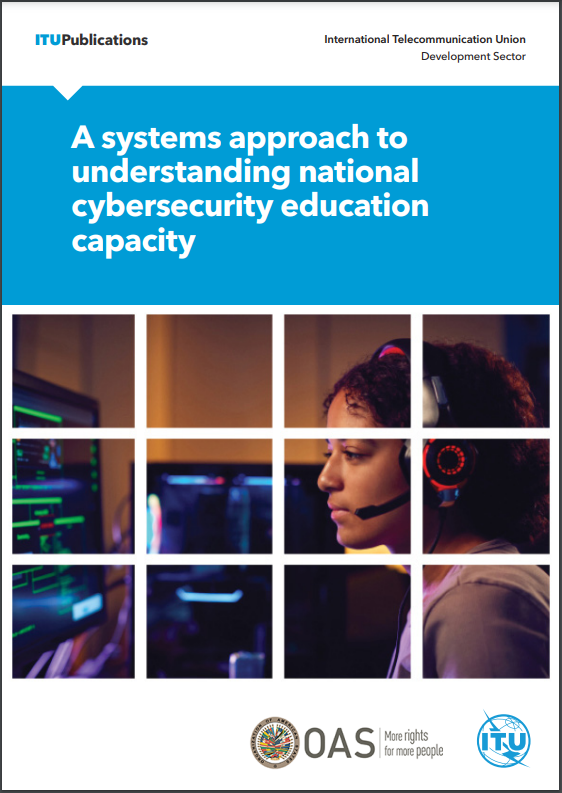 |
SYSTEMS APPROACH TO UNDERSTANDING NATIONAL CYBERSECURITY EDUCATIONAL CAPACITY
ITU and the Organization of American States developed a systems approach to understanding and enhancing national cybersecurity education capacity, emphasizing a holistic understanding, stakeholder engagement, and sustainable capacity development. Building a resilient cybersecurity workforce is not a one-time effort but an ongoing process. A systems approach helps design and implement strategies that are sustainable and adaptable to changing circumstances.
Read the joint paper here. |
 |
The NCS Guide 2021
This Guide aims to provide a useful, flexible and user-friendly framework to set the context of a country’s socio-economic vision and current security posture and to assist policy-makers in the development of a Strategy that takes into consideration a country’s specific situation, cultural and societal values, and that encourages the pursuit of secure, resilient, ICT-enhanced and connected societies.
The Guide is a unique resource, as it provides a framework that has been agreed on by organisations with demonstrated and diverse experience in this topic area and builds on their prior work in this space. As such, it offers the most comprehensive overview to date of what constitutes successful national cybersecurity strategies.
|
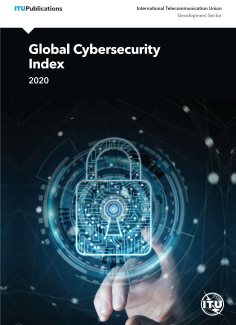 |
Global Cybersecurity Index 2020 Report
Many countries are making progress in their commitments to responding to cybersecurity challenges, despite opportunistic actors that have taken advantage of our desire for information, our fears about the pandemic, shift to working from home and remote learning, dependence on healthcare systems, and more.
This latest iteration of the Global Cybersecurity Index will help promote further action towards secure digital ecosystems needed for recovery and growth. We hope it will also help address the growing cybercapacity gap between developed and developing countries by fostering knowledge, upskilling, and building competencies.
|
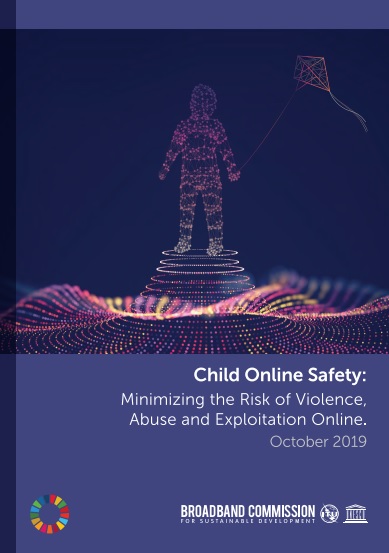 |
Child Online Safety: Minimizing the Risk of Violence, Abuse and Exploitation Online.
Affrdable, reliable connectivity is now coming to more countries than ever.It has the potential to transform children’s lives, giving them access to previously unimagined educational, cultural, and economic opportunities. But too often, children cannot realize these opportunities, because the Internet is also a place, in which the vulnerable are exposed to the risk of serious harm. Globally, there are more than 2.2 billion people under the age of 18, making children the biggest vulnerable group in our societies. Children around the world are regularly exposed to risks and harms online, including: • Sexual abuse, exploitation, and trafficking – ranging from grooming to rape, recorded or streamed by abusers. • Online harassment, victimization, and cyberbullying. • Radicalization and recruitment by extremist organizations. • Exposure to misinformation and age-inappropriate content, such as pornography or violence. • Apps and games that are designed to encourage unhealthy habits and behaviors. • Falling victim to illegal or unethical data harvesting and theft. • The normalization of gender-based violence through exposure to online abuse materials.
To combat these harms and risks requires a coordinated and global approach. Unfortunately, the fight against child online abuse and exploitation is neither unified nor pursued in a way that is consistent across all countries. Capabilities, legal frameworks, awareness, lack of allocated and dedicated resources and the will to act all vary widely between agencies and jurisdictions.
|
 |
Global Cybersecurity Index (2018)
The Global Cybersecurity Index (GCI) is a multi-stakeholder initiative to raise cybersecurity awareness and to measure the commitment of countries to cybersecurity and its wide field of application cutting across industries and sectors.
Each country's level of development is analyzed within five categories: Legal Measures, Technical Measures, Organizational Measures, Capacity Building and Cooperation.
|
 |
Guide to Develpoing a National Cybersecurity Strategy
The reference guide represents a comprehensive one-stop resource for countries to gain a clear understanding of the purpose and content of a national cybersecurity strategy, as well as actionable guidance for how to develop a strategy of their own. The reference guide further lays out existing practices, relevant models and resources, as well as offers an overview of available assistance from other organizations. An accompanying support tool assists evaluation of the strategy.
Reference Guide and evaluation tool were drafted in a democratic process among partnering organizations.
|
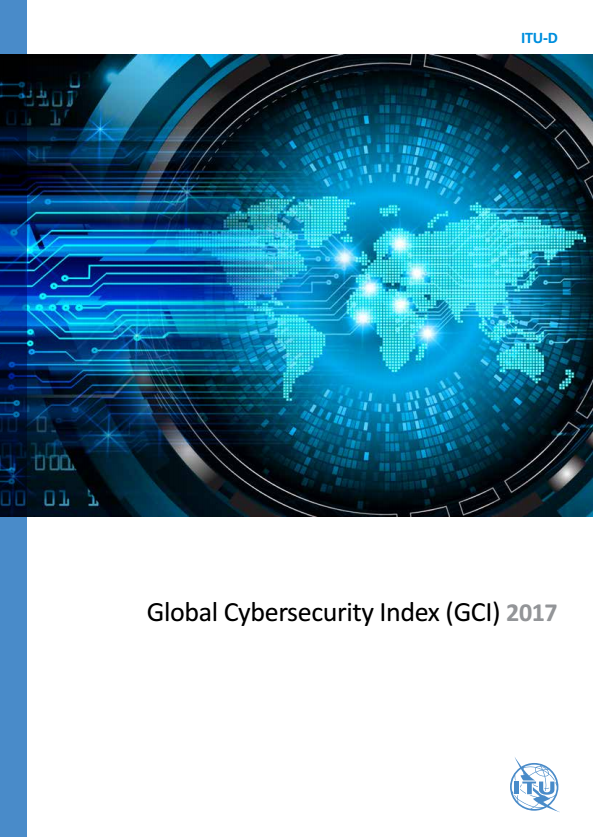 |
Global Cybersecurity Index (GCI) 2017
The Global Cybersecurity Index (GCI) 2017 measures each nation's level of commitment to the ITU's Global Cybersecurity Agenda, with the aim of highlighting potential areas for improvement and driving cybersecurity to the forefront of national plans. Download Full report version of 19th of July 2017 |
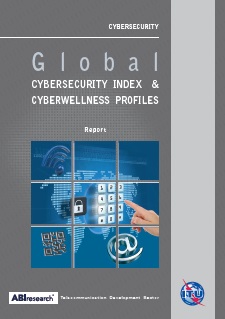 |
Global Cybersecurity Index & Cyberwellness Profiles Report 2015
The Global Cybersecurity Index (GCI) measures each nation's level of commitment to the ITU's Global Cybersecurity Agenda, with the aim of highlighting potential areas for improvement and driving cybersecurity to the forefront of national plans. This report presents the 2014 results of the GCI and the Cyberwellness country profiles for Member states. It includes regional rankings, a selected set of good practices and the way forward for the next iteration.
Disclaimer The original publication is in English and translations in other languages may not accurately reflect the content of the English publication. In case of discrepancy, the English text shall prevail. |
 |
New edition 2014: ITU Publication on UNDERSTANDING CYBERCRIME: Phenomena, Challenges and Legal Response
As cyber-threats can originate anywhere around the globe, the challenges are inherently international in scope and it is desirable to harmonize legislative norms as much as possible to facilitate regional and international cooperation. To assist countries in understanding the links between cybersecurity, the building of confidence and security in the use of ICTs, and cybercrime, ITU has developed, and is in the process of developing, a number of tools. One such tool, which ITU has developed together with an expert, is the ITU publication titled “UNDERSTANDING CYBERCRIME: Phenomena, Challenges and Legal Responce”. The Guide can serve to help developing countries better understand the implications related to the growing cyber-threats and assist in the assessment of the current legal framework and in the establishment of a sound legal foundation, if this does not yet exist.
|
 |
Question 22-1/1
Securing Information and Communication Networks. Best practices for Developing a Culture of Cybersecurity. Year of publication: 2014
|
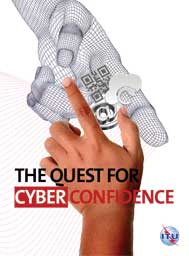 |
The Quest for Cyber Confidence
This book addresses the increasingly daunting task of building confidence in the use of cyber platforms and technologies against a backdrop of recent high-profile security breach incidents and a plethora of emerging threats that have shaken trust in these essential tools of our time. It follows publication of The Quest for Cyber Peace in 2009, which focuses on the promotion of cyber peace in a sphere which has generated tremendous benefits and progress to mankind, but also spawned widespread criminal activities and created new avenues for intelligence gathering, industrial espionage, and conflict. Necessarily, this volume returns to these issues revolving around the overriding theme of the use of the cyber domain as a potent force for either good or evil, especially the impact of the 'dark' Internet on trust in the cyber dimension. Here, however, its central theme promotes the concept of cyber confidence. Table of contents
|
 |
Electronic Crimes: Knowledge-based Report (Skeleton)
This report documents the achievements of the regional activities carried out under the ICB4PAC project, Capacity Building and ICT Policies, Regulations and Legislative Frameworks for Pacific Island countries, officially launched in Fiji in November 2009. These include the enactment of substantive criminal law, procedural law, electronic evidence law and also include the possible liability of internet service providers.
|
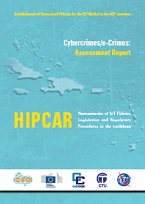 |
Cybercrimes/e-Crimes: Assessment Report
This report is an assessment of the analysis of the enacted cybercrime legislation in the 6 Caribbean countries. This include the challenges faced and possible measures to enhance the related legislation so as to ensure a steady and regular flow of communication and availability of internet related services. |
 |
Readiness Assessment for Establishing a national CIRT
Readiness Assessment Report LDCs change to: This is a readiness assessment report of Cybersecurity situation in five least developed countries in the South Asia. It encompasses the review of the institutional and regulatory frameworks, existing policies on critical information infrastructure protection, human development needs and identied areas of improvement and outnlines a recommendation for establishing a National Computer Incidence Response Team (CIRT). The objectives of the readiness CIRT assessment study were to assess the capability and readiness to design and build a sustainable national CIRT, based on an analysis of stakeholder attributes with relevance to security incident response needs of the concerned countries. |
 |
ITU/UNODC Cybercrime:The global challenge
Combination of existing training material and courses, providing countries with wider access to a range of knowledge and tools; Access to region-specific experience, through combination of two broad networks of field offices in all regions; A comprehensive approach combining crime prevention, criminal justice and cybersecurity, covering all applicable legal and technical standards.
|
 |
Cybersecurity Guide for Developing Countries
This Cybersecurity guide for developing countries has been prepared for facilitating the exchange of Information on best practices, related to Cybersecurity issues and to meet the stated goal of the Global Cybersecurity Agenda (GCA) to "enhance security and build confidence in the use of information And communication technologies (ICT)". The guide is intended to give developing countries a tool allowing them to better understand the economic, political, managerial, technical and legal Cybersecurity related issues in the spirit of the Global Cybersecurity Agenda. The purpose of it is to help countries get prepared to face issues linked to ICT deployment, uses, vulnerabilities and misuses. The content of the guide has been selected to meet the needs of developing and, in particular, least developed countries, in terms of the use of information and communication technologies for the provision of basic services in different sectors, while remaining committed to developing local potential and increasing awareness among all of the stakeholders. |
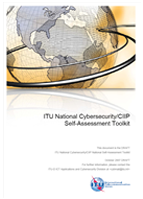 |
ITU National Cybersecurity/CIIP Self-Assessment Tool
Information infrastructures have long been subject to national policies, procedures and norms. National government agencies and institutions exist to implement and oversee these activities, and the responsibility for the operation and management of information infrastructures has traditionally been shared among government, owners and operators, and users. Protection of the information infrastructure (formerly the PSTN network) has been a longstanding concern of member states and the work of the ITU is testimony to this concern. However, the use of information systems and networks and the entire information technology environment have changed dramatically in recent years. These continuing changes offer significant advantages but also require a much greater emphasis on security by government, businesses, other organizations and individual users who develop, own, provide, manage, service and use information systems and networks (“participants”). Increasing interconnectivity, the growing intelligence at the edges of the network, and the expanding role of information infrastructures in the economic and social life of a nation demand a new look at existing measures for the enhancement of cybersecurity...
|
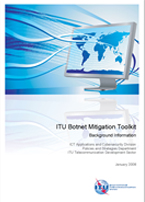 |
ITU Botnet Mitigation Toolkit
Botnets (also called zombie armies or drone armies) are networks of compromised computers infected with viruses or malware to turn them into “zombies” or “robots” – computers that can be controlled without the owners’ knowledge. Criminals use the collective computing power and connected bandwidth of these externally-controlled networks for malicious purposes and criminal activities, including, inter alia, generation of spam e-mails, launching of Distributed Denial of Service (DDoS) attacks, alteration or destruction of data, and identity theft.
The threat from botnets is growing fast. The latest (2007) generation of botnets such as Zhelatin (Storm Worm) uses particularly aggressive techniques such as fast-flux networks and striking back with DDoS attacks against security vendors trying to mitigate them. An underground economy has now sprung up around botnets, yielding significant revenues for authors of computer viruses, botnet controllers and criminals who commission this illegal activity by renting botnets.
In response to this, ITU is developing a Botnet Mitigation Toolkit to help deal with the growing problem of botnets. Inspired by the Australian Internet Security Initiative (AISI), the toolkit draws on existing resources, identifies relevant local and international stakeholders, and takes into consideration the specific constraints of developing economies. The toolkit seeks to raise awareness among Member States of the growing threats posed by botnets and the linkage with criminal activities and incorporates policy, technical and social aspects of mitigating the effects of botnets. The first draft of the background material for the project was made available in December 2007 with pilot tests planned in a number of ITU Member States in 2008 and 2009. As part of this activity countries in the region are welcome to contact ITU-D if they have an interest in initiating a botnet mitigation pilot project in their respective countries.
|
|